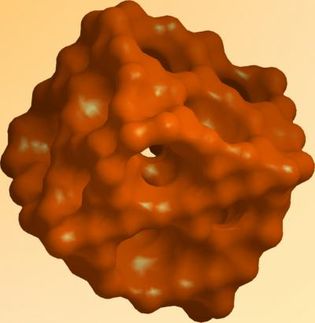Measurement at Big Bang conditions confirms lithium problem
New experimental data confirm lithium nucleosynthesis after Big Bang
The field of astrophysics has a stubborn problem and it's called lithium. The quantities of lithium predicted to have resulted from the Big Bang are not actually present in stars. But the calculations are correct – a fact which has now been confirmed for the first time in experiments conducted at the underground laboratory in the Gran Sasso mountain in Italy. As part of an international team, researchers from the Helmholtz-Zentrum Dresden-Rossendorf (HZDR) studied how much lithium forms under Big Bang conditions. The results were published in "Physical Review Letters".

This is Michael Anders at the LUNA accelerator in Italy.
HZDR/M. Anders
Lithium, aside from hydrogen and helium, is one of the three elements that are created before the first stars form. These three elements were – according to the theory – already created early on, through what is known as "primordial nucleosynthesis." That means that when the universe was only a few minutes old, neutrons and protons merged to form the nuclei of the these elements. At the Laboratory for Underground Nuclear Astrophysics (LUNA), the nucleosynthesis of lithium has now been reproduced by an international team of scientists. Michael Anders, who earned his doctorate in the last year at TU Dresden and HZDR on this very topic, took a leading role on the team. Within the framework of a project that was funded by the German Research Foundation, he was supervised by Dr. Daniel Bemmerer, group leader at HZDR.
In the Italian underground laboratory, the scientists fired helium nuclei at heavy hydrogen (known as deuterium) in order to reach energies similar to those just after the Big Bang. The idea was to measure how much lithium forms under similar conditions to those during the early stages of the universe. The result of the experiment: the data confirmed the theoretical predictions, which are incompatible with the observed lithium concentrations found in the universe.
"For the first time, we could actually study the lithium-6 production in one part of the Big Bang energy range with our experiment," explains Daniel Bemmerer. Lithium-6 (three neutrons, three protons) is one of the element's two stable isotopes. The formation of lithium-7, which possesses an additional neutron, was studied in 2006 by Bemmerer at LUNA.
With these new results, what is known as the "lithium problem" remains a hard nut to crack: on the one hand, now all laboratory results of the astrophysicists suggest that the theory of primordial nucleosynthesis is correct. On the other hand, many observations of astronomers show that the oldest stars in our Milky Way contain only half as much lithium-7 as predicted. Sensational reports by Swedish researchers, who discovered clearly more lithium-6 in such stars than predicted, must also likely be checked again based on the new LUNA data. Bemmerer says, "Should unusual lithium concentrations be observed in the future, we know, thanks to the new measurements, that it cannot be due to the primordial nucleosynthesis."
Further research will soon be carried out in a new underground laboratory in Dresden
What was important for the studies was the special location of LUNA: in the mountainous Gran Sasso d'Italia, 1400 meters of solid rock keep the disturbance from cosmic radiation at bay. The experimental setup is additionally enveloped in a lead shell. Only with such good shielding can the rare interactions between the nuclei be precisely determined. But within the next year, similar research will also be possible in Dresden. TU Dresden and HZDR will put the accelerator laboratory "Felsenkeller" into operation. Although the solid rock shielding from natural radiation in this former brewery cellar is only forty-five meters, it is already sufficient for many measurements. The new laboratory also possesses a particle accelerator that is more than twelve times as strong: "There we can expand our experiments and study the formation of elements at high energy ranges", says Bemmerer.
Original publication
M. Anders et al. (2014), First Direct Measurement of the 2H(α,γ)6Li Cross Section at Big Bang Energies and the Primordial Lithium Problem. Physical Review Letters 113, 042501





























































